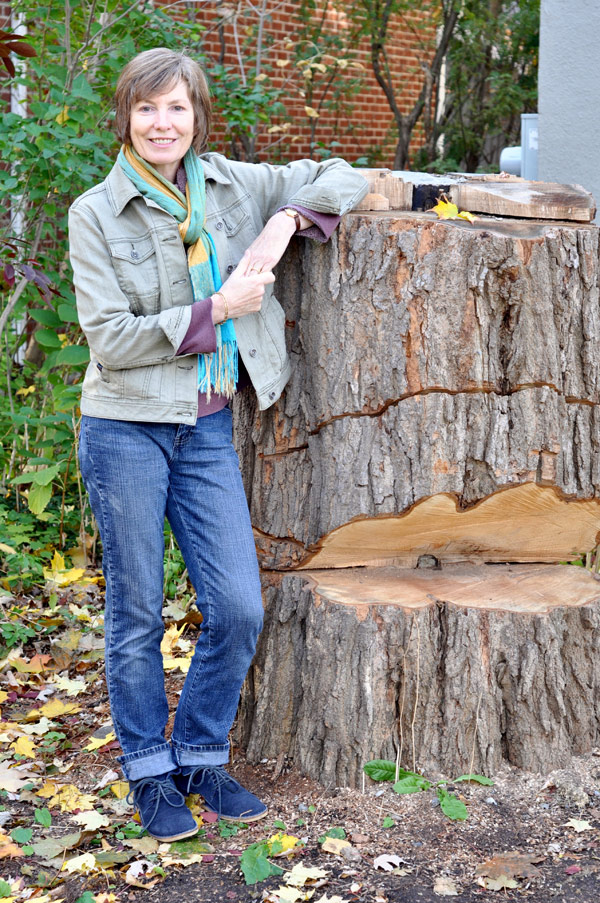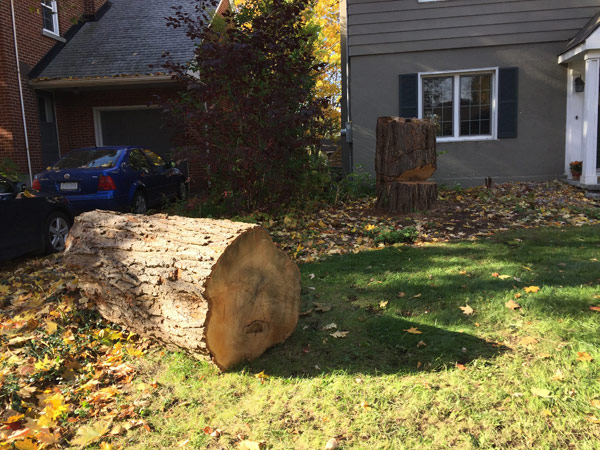Dear Editor,
We had a large, 80-100 year old silver maple taken down in front of our house (we live just off Holland Avenue in the Civic Hospital area). The tree was considered to be a dangerous structure with some rot in the large upper branches. What no one could have predicted was just how difficult it would be to fell – the reason being was that the lower 6’ of tree contained a large core of cement! At some point in the tree’s early years someone had had the idea to fill it with cement, probably to stabilize it. I guess this was done back then. It was consequently a huge task to bring it down; it ruined five chain saw blades, snapped two ropes, took countless man-hours and involved all our neighbours and Wright’s Tree Service employees!


After the arborists were done, there were two parts of the tree remaining: a very tall stump and a very large log. My son and his friends tackled the stump one weekend and managed to get most of it down with a saw and mallet by taking turns ‘having a go’ at it. There were four re-bars in that, too, as well as the cement – crazy! What we’re left with is about 8” high. Eventually we’ll get someone to carve something worth looking at!
As for the log, someone named David answered my Kijiji ad and set to it with his chain saw over the course of three days. He was very persistent and very careful. In fact there was only about 8” of cement in that huge log (as well as two re-bars). He took the wood and left us a coffee-table sized slice for posterity.
The story of our tree is a cautionary tale if ever there was one!
Perhaps there are other readers out there in the city who have had a similar experience? We also wonder if tree companies are aware of this possibility when they enter into a tree removal contract in the city?
Ruth Norfolk
Civic Hospital
